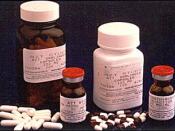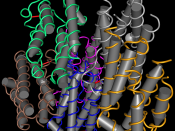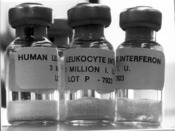Q2. This question has the following 2 parts:
(i) Consider the case where the price of the cancer drug, Interferon, is a reasonable reference price for AZT. If that is so, compare the annual cost of AZT in November 1989 (to the patients) with and without a further 20% price cut (to the wholesalers) with the annual cost of Interferon (assuming that the annual cost to a patient using Interferon did not change from 1987 to 1990). What conclusions would you draw from this exercise regarding whether Burroughs Wellcome should have a further 20% price cut (to the wholesalers) or not on AZT?
(ii) Note that part (i) assumes that Interferon is a reasonable reference price for AZT. Do you think this assumption is reasonable? Give reasons for your answer.
Question-2 (part-i)
Annual cost of Retrovir treatment to AIDS patients is as follows:
Price to wholesalersPrice to customerAnnual cost to customers
After 2nd price cut of 20% (in Sept.
1989)$120 per 100 capsules$150 per 100 capsules$6570
After 3rd price cut of 20% (expected)$96 per 100 capsules$120 per 100 capsules
(Assuming 25% markup by wholesalers as after 2nd price cut)$5256
Given: Daily consumption of Retrovir - 1200mg i.e. 12 capsules of 100mg per day
Considering the assumption that Interferon is a reasonable reference for Retrovir and has an annual treatment cost of $5000, any further price cut in the price of Retrovir is not warranted.
TEV = Cost of Alternative + Value of Performance Differential
BWC is the first and, as of 1990, the only drug to gain FDA approval for the treatment of AIDS. Retrovir's role to the patients is paramount; results show Retrovir extends patients life expectancy, increases their sense of wellness, boosts their immune system, and helps with weight gain. Clearly the benefits of Retrovir...


